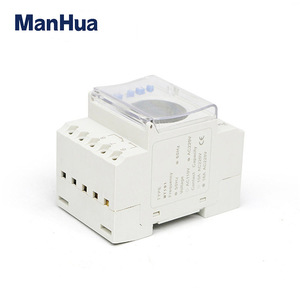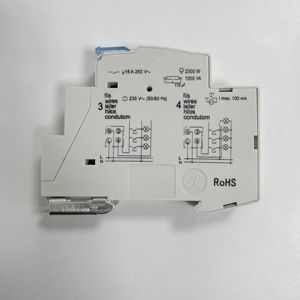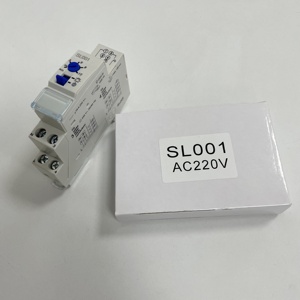(30749 products available)






























































































































































































































An electric timer for lights is a device that automatically turns lights on or off after a set period. They are great for saving energy and enhancing home security. There are various kinds of electric timers for lights.
Various designs are available, from simple and elegant to modern and high-tech, to satisfy different tastes and preferences.
Size and shape
Electric light timers come in different sizes and shapes, including compact and slim designs that can fit into small spaces, as well as larger units with more prominent displays. Some timers have a rectangular or square form, while others are round or have an innovative design to blend in with the existing decor.
Display
Electric light timers have clear and easy-to-read displays, such as LCD or LED screens, showing the time, settings, and status. Some timers have backlit displays for visibility in low-light conditions, making it easier to see and operate the device at night.
Buttons and controls
Physical buttons or touch-sensitive controls are used for light timers. They are used to set the time and adjust the timer settings. The buttons are often labeled clearly for easy operation. Some light timers have rotary knobs or sliders for simple time setting and adjustment. Advanced models come with remote controls, enabling users to set and adjust the timer from a distance.
Shell material
The shell material for electric light timers includes flame-retardant plastic, polycarbonate, and ABS materials. These plastics ensure the timer's robustness and durability, withstanding daily wear and tear and usage in different environments.
Color options
Electric light timers are available in different color options to satisfy various preferences and interior decor styles. Common colors include black, white, gray, and beige. Some timers have vibrant colors to stand out and add decorative elements to the space.
Mounting and installation
The design of electric light timers facilitates easy mounting and installation. Most timers are plug-and-play devices that can be directly plugged into a wall outlet, with the light or appliance plugged into the timer. Some timers have wall-mounted designs, allowing users to easily install the timer on the wall. Electric light timer designs include user-friendly installation procedures and clear instructions, enabling users to complete the installation quickly.
Electric timers for lights can be used in various situations. They help save energy, increase convenience, and improve security. People can use them in homes, businesses, schools, and more.
Choosing the right electric timer for lights ensures that lighting control systems work according to schedule, conserve energy, and improve security. When selecting a timer, consider the following factors:
Purpose and Application:
Determine the timer's intended use to choose the right type. If the timer is for outdoor lights, it should have features like photocell sensors and weatherproof housing. Indoor timers should have programmable settings and multiple outlets.
Power Source:
Electric timers work with batteries and AC power. Battery-powered timers are portable and convenient, while AC-powered timers provide continuous power and are suitable for permanent installations.
Programmability:
When choosing a timer, consider how many programs it can run. Some timers allow users to set multiple on/off schedules throughout the day, while others have a simple manual setting.
User Interface:
A user-friendly interface is essential for easy programming and operation. Look for timers with clear LCD displays and intuitive buttons or touchscreen controls.
Compatibility:
Ensure the timer is compatible with existing lighting systems and fixtures. Some timers work with specific voltage levels or electrical currents, while others are designed for certain light types, such as LED or incandescent bulbs.
Special Features:
Look for special features that enhance the timer's functionality. Random mode creates a more realistic effect by turning lights on and off at different times. Countdown mode allows users to set a specific duration for light activation. Dual voltage timers offer flexibility for use in different voltage applications.
Brand Reputation and Warranty:
Choose electric timers for lights from reputable brands known for quality and reliability. A good warranty period is a sign of the manufacturer's confidence in the product. It also provides assurance to the buyer in case of defects or malfunctions.
Q1: What is the difference between a mechanical timer and a digital timer?
A1: A mechanical timer has a round dial that the user sets by turning. A digital timer has buttons and a digital display to set the timer.
Q2: Can electric timer switches be used outdoors?
A2: Yes, if the timer is weatherproof or placed in a weatherproof enclosure.
Q3: What should users consider when choosing an electric timer for lights?
A3: They should consider the timer's features, ease of use, compatibility with existing fixtures, and power supply type.
Q4: How do users set the timer?
A4: Setting the timer involves programming the desired on/off schedule using the timer's dial or digital interface.
Q5: Is it easy to install an electric timer for lights?
A5: Electric timers are easy to install. They only need to connect to three electrical wires: line, load, and neutral. The process is as simple as plugging in a lamp for plug timers.
The web search volume for "electric timers for lights" shows an average monthly search count of 720, with significant fluctuations over the past year. Notably, there was a dramatic increase of 51% in the last three months, contrasting with a substantial overall decline of 69% over the past twelve months.
Analyzing the detailed monthly data, the keyword experienced its peak web search volume in December 2023 and January 2024, each recording 1900 web searches. Following this peak, there was a sharp decline, with web search volumes dropping to 480 in February and further to 320 in March. The web searches stabilized at around 390 from April to September, before slightly increasing to 590 in November. This pattern suggests a strong seasonal influence, with peaks during the winter months, possibly due to increased indoor activities and the need for light management during shorter daylight hours.
The trend indicates a clear seasonal pattern with spikes during colder months, likely driven by consumer behavior related to managing indoor lighting more efficiently during darker periods of the year. This analysis points to potential strategic marketing periods for businesses in the electrical equipment and supplies sector, focusing on promoting products like electric timers for lights during the fall and winter seasons when consumer interest is naturally heightened.